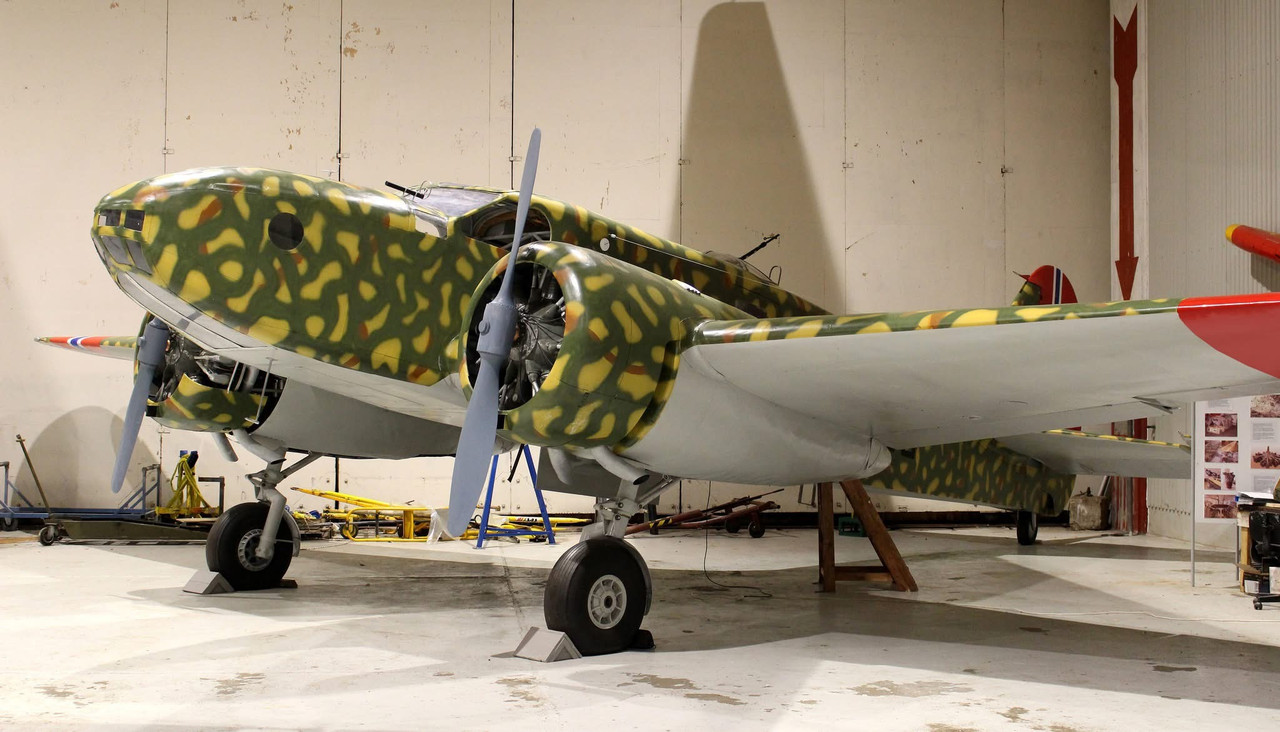
Almost finished for display after restoration. Bring displayed in Stavanger Norway at Sola museum
From Wiki and google translated
The Caproni Ca.310 was known in Norway as the klippfiskflyet (dryed Cod used in Baccalao and other dishes). The name refers to the fact that the aircraft were paid for with income from the klippfisk export to Italy. In 1938, Norway placed an order for aircraft for the Norwegian Air Force. Four aircraft were delivered in 1938 and these were stationed at the Bomb Wing of the Norwegian Air Force at Sola on 9 April 1940. The aircraft were of no importance during the German invasion of Norway. The four aircraft stationed at Sola did not see action. However, after Sola had been occupied, Norwegian pilots managed to take off with one of the Caproni aircraft. The aircraft had to be abandoned at Vangsmjøsi and in 1981 the remains of this aircraft were raised. It is under reconstruction and reconstruction at the Aviation History Museum, Sola
In 1939, Norway purchased license rights to build ten Ca.310s. The first series of five was started at Kjeller in April 1940, but there is no trace of them. In the autumn of 1939, the Army Air Force ordered a further 15 Caproni of an improved version, the Caproni 312bis. The first two were ready for delivery immediately before 9 April and the delivery of the remaining 13 was scheduled for August 1940. Naturally, these aircraft never reached Norway. They were stored at the factory in Italy until June/July 1942 when they were requisitioned by the Italian Air Force, and were used as transport aircraft.
One aircraft was registered civilly, LN - DAK, and painted white. It was named Brevduen and was used as a mail aircraft. It carried mail to Gothenburg and Copenhagen in the last couple of years before the war.[4]
In addition to Norway, the Ca.310 was used by the air forces of Italy, Hungary, Yugoslavia, Peru and Croatia.
 Author
Topic: Caproni Ca. 310 (Read 475 times)
Author
Topic: Caproni Ca. 310 (Read 475 times)


